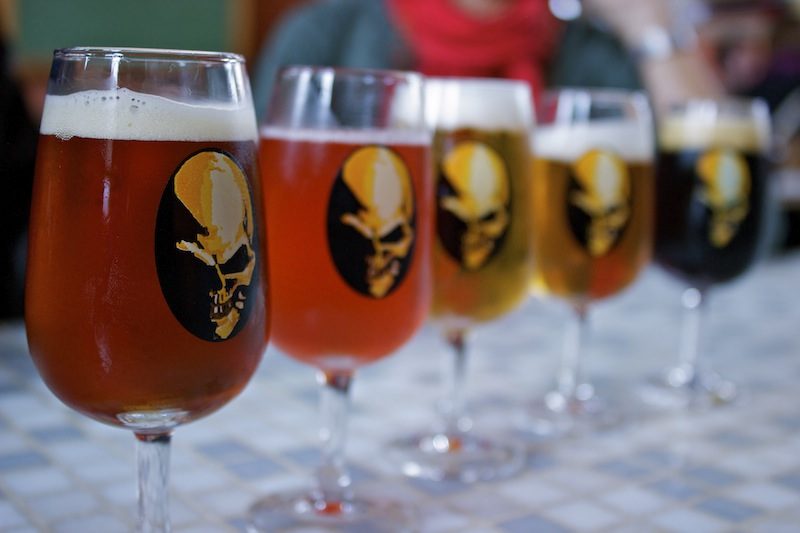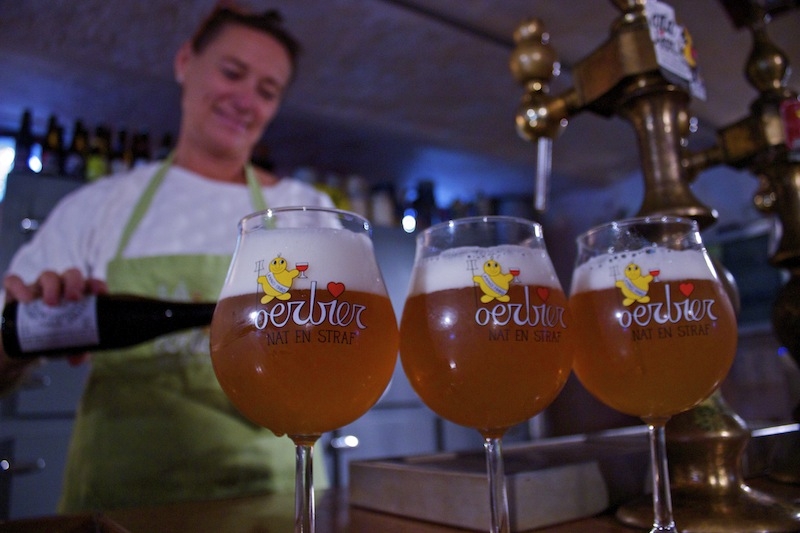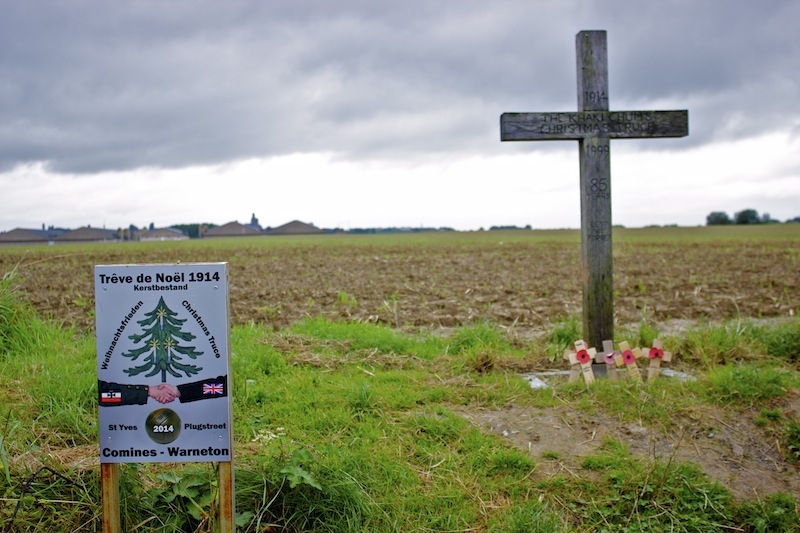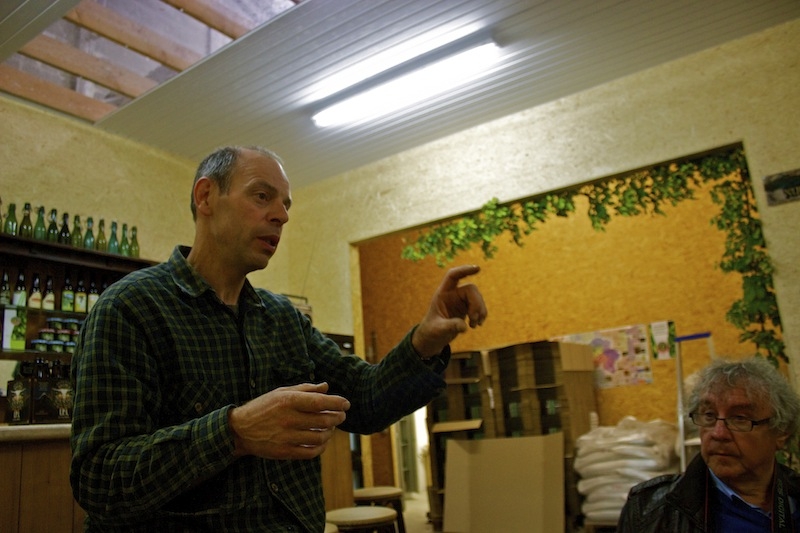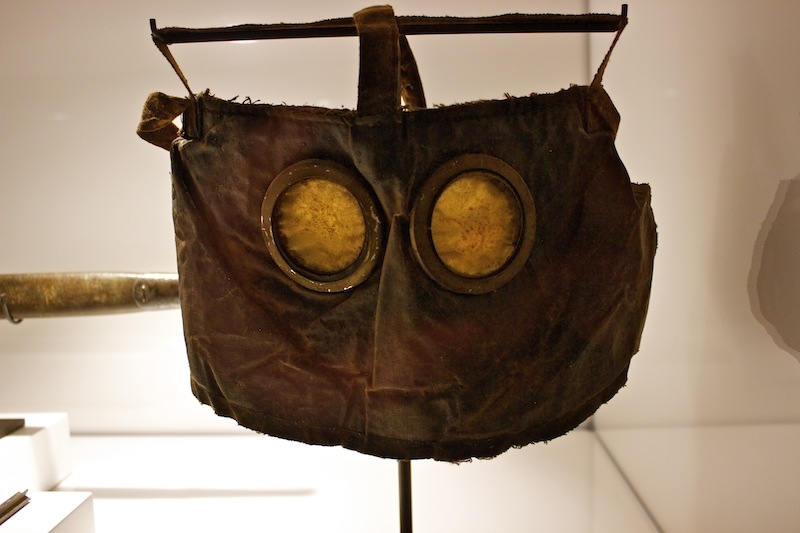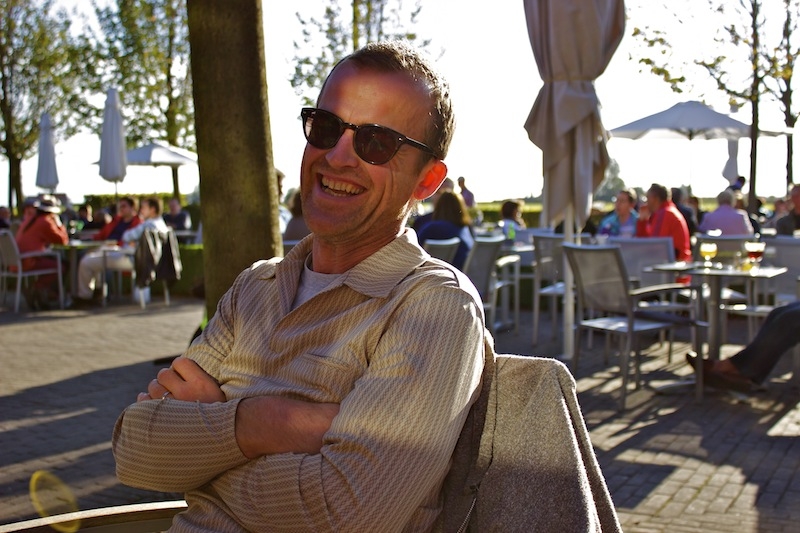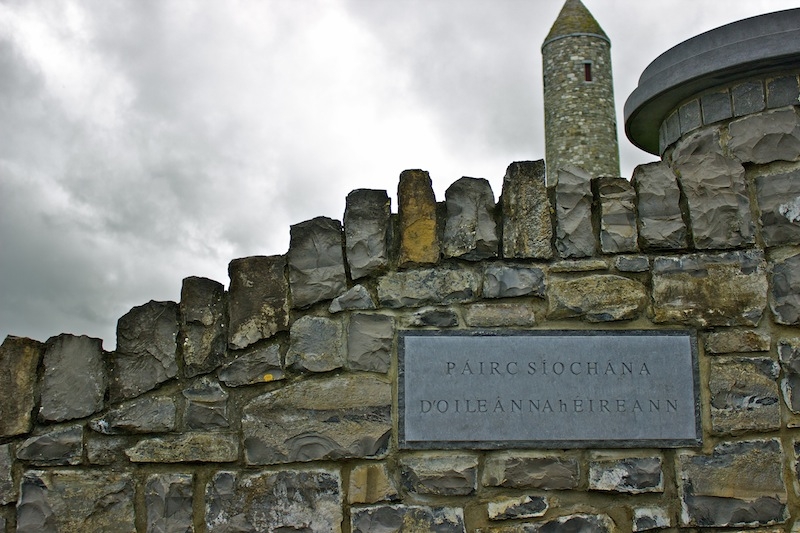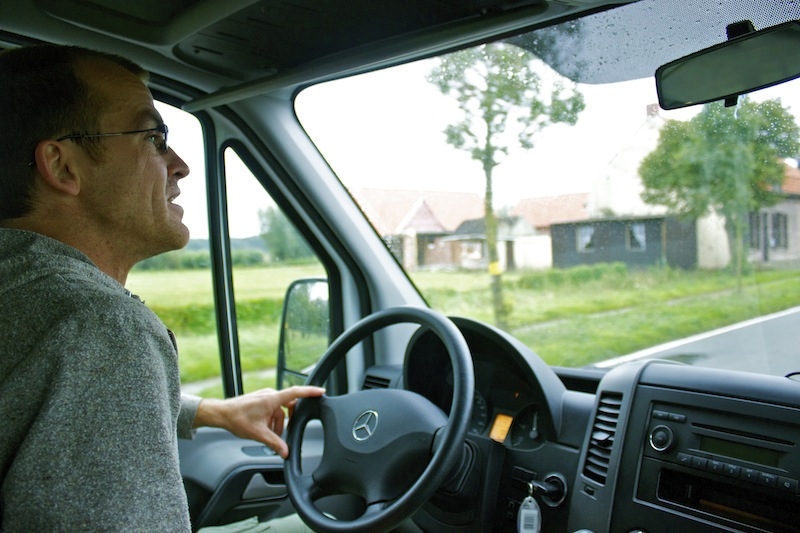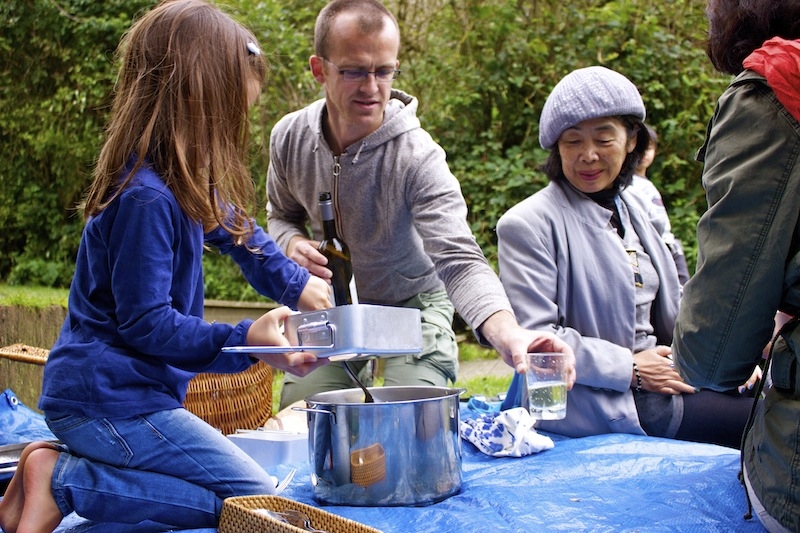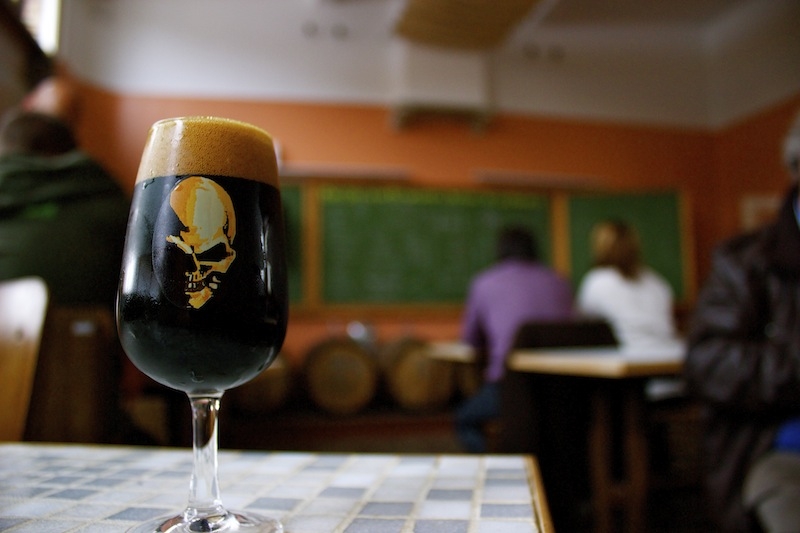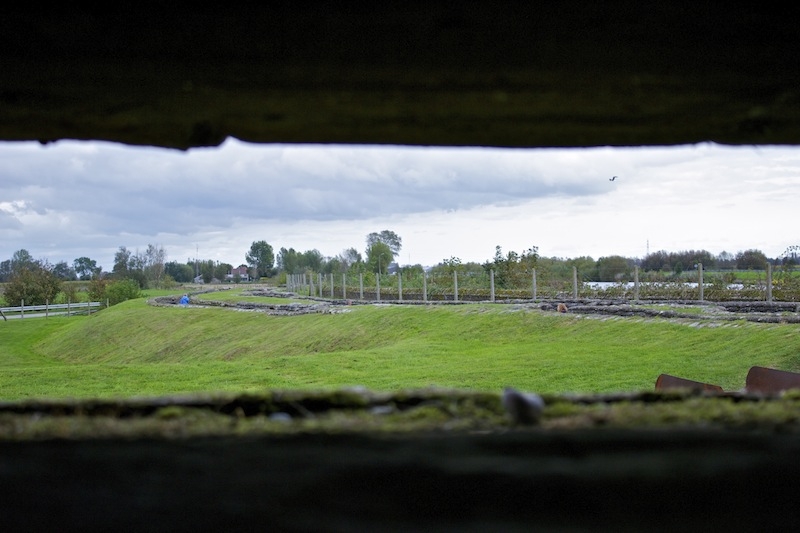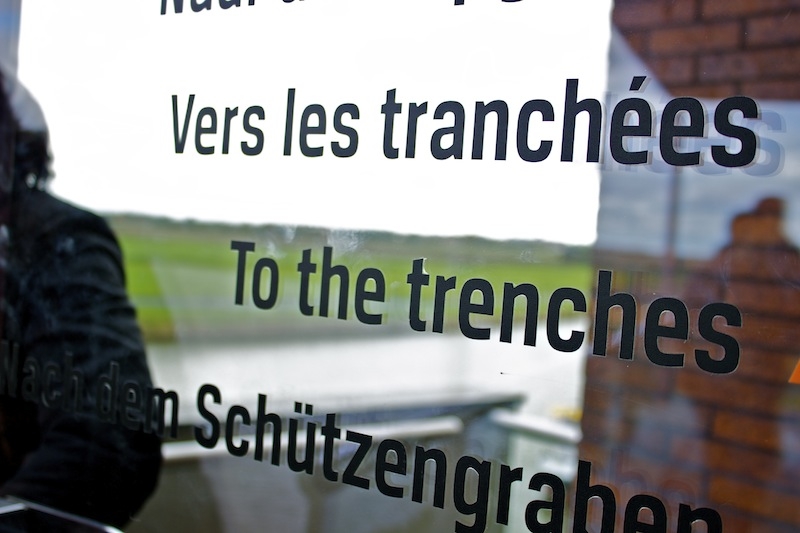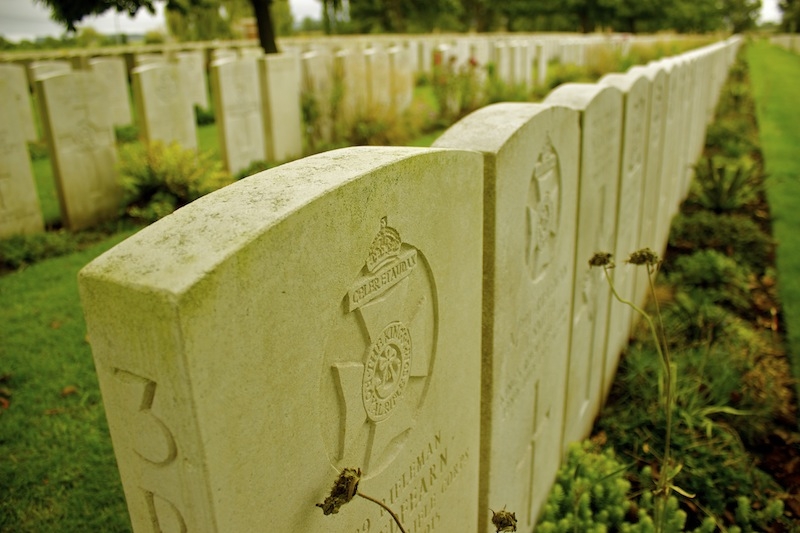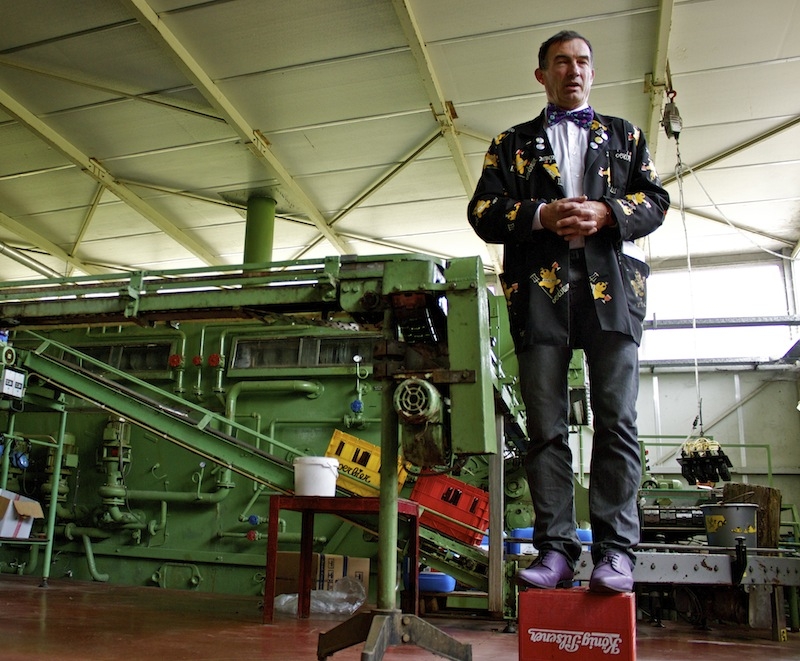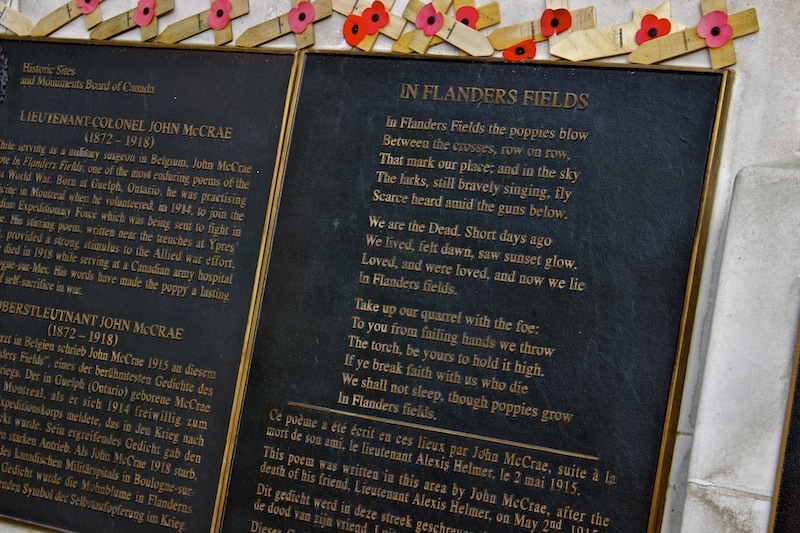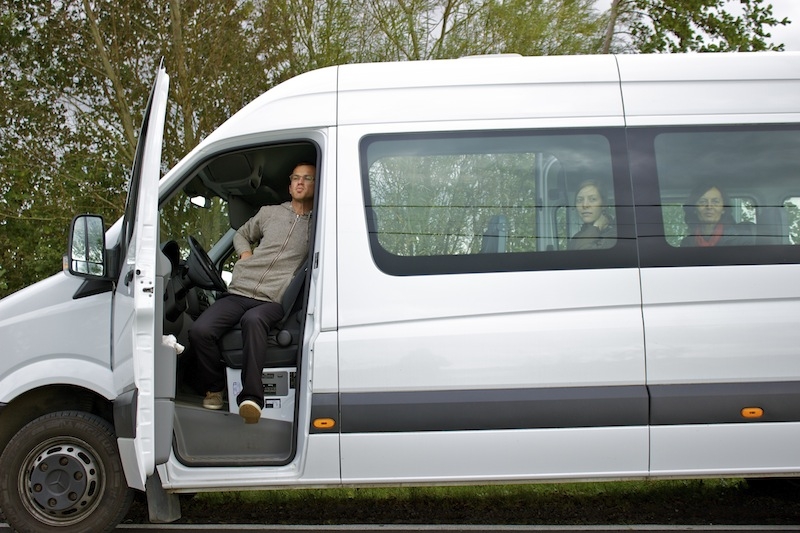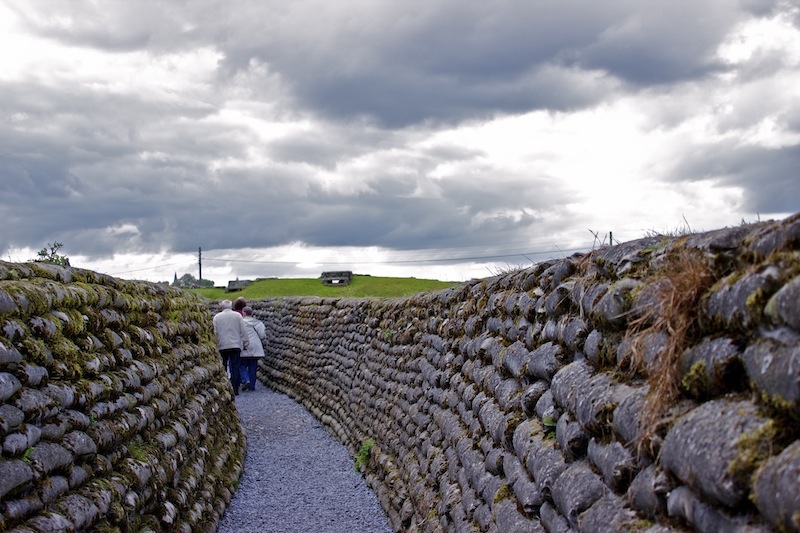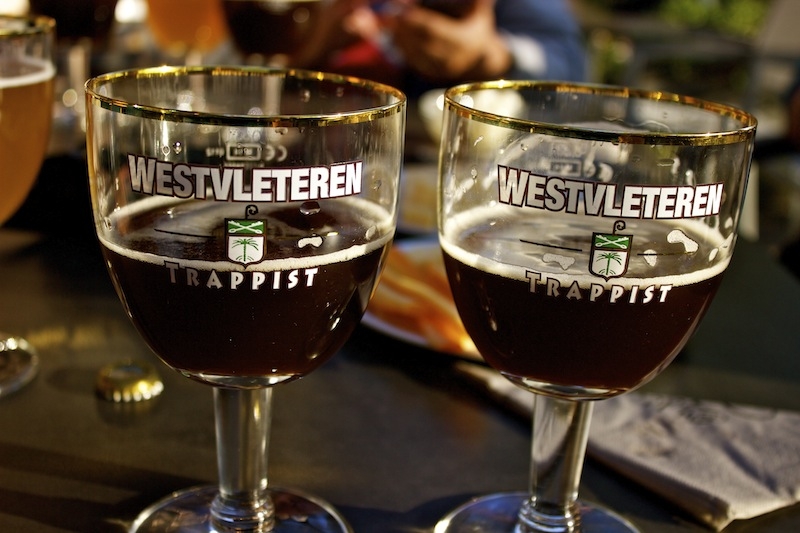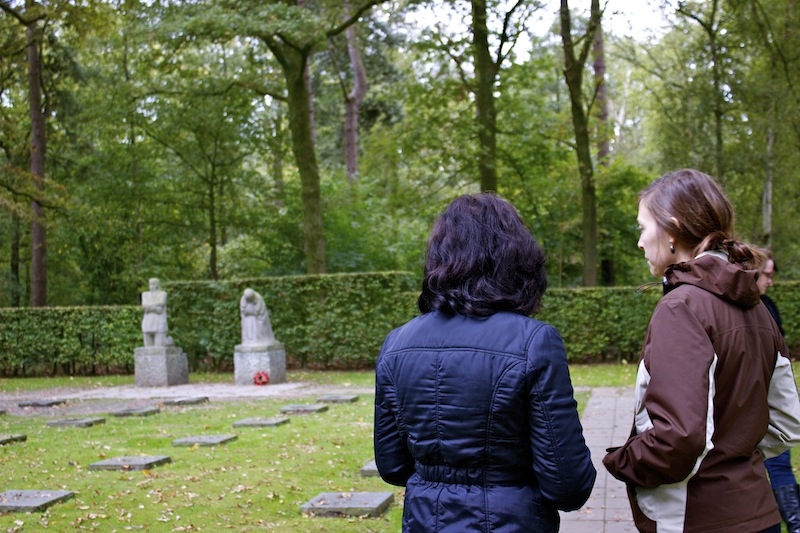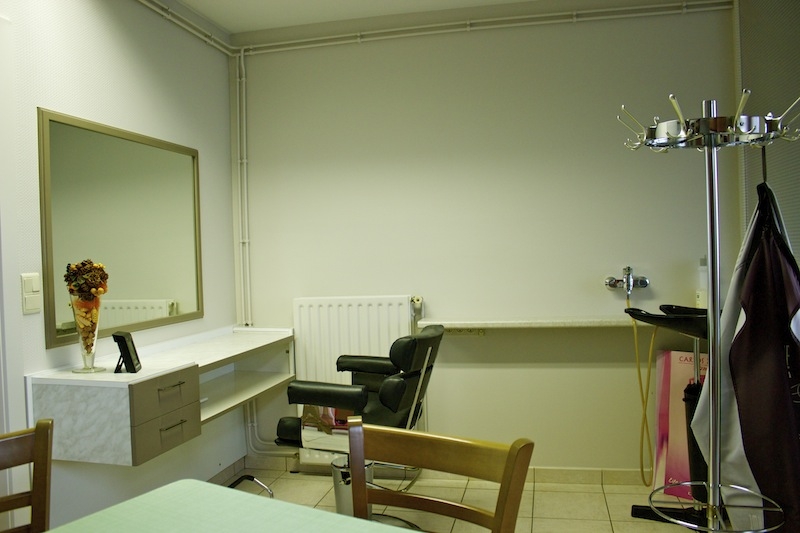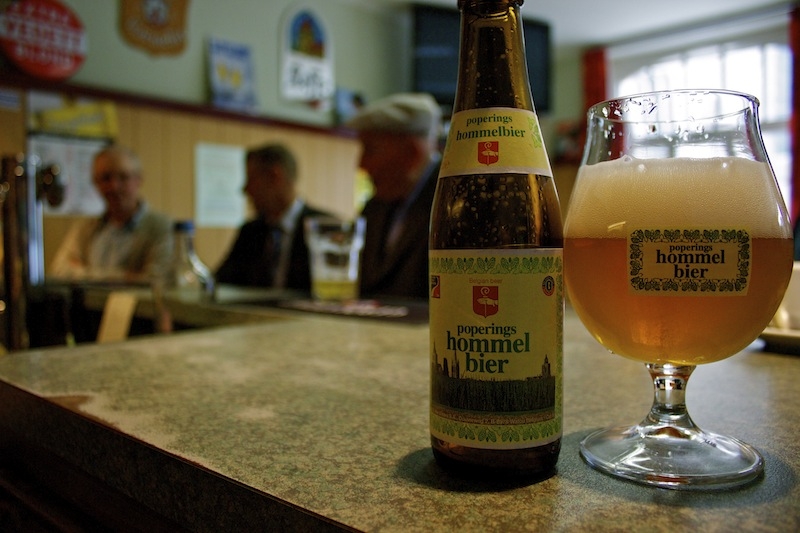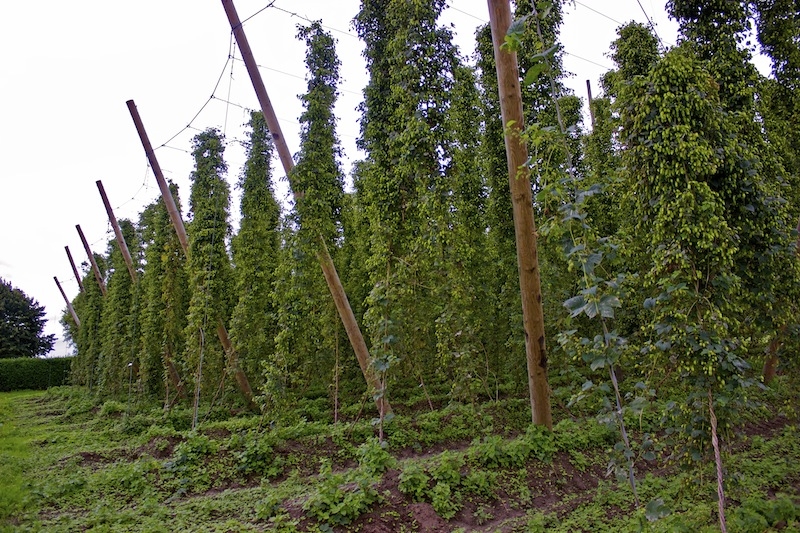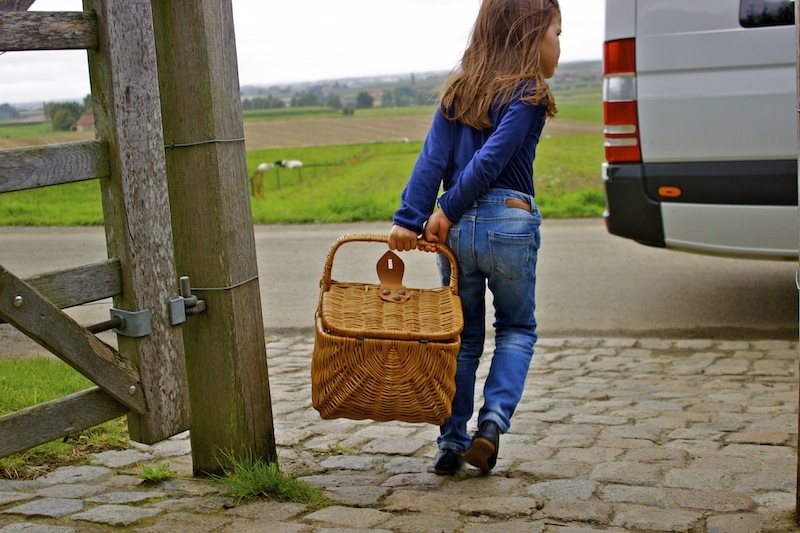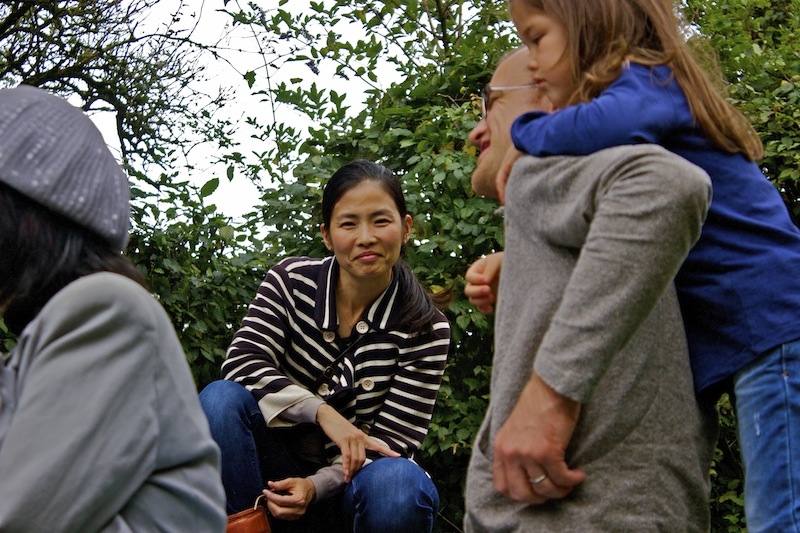A new series of Belgian beer tours which explore the Ypres Salient and the breweries of the Westhoek is currently in development.
The tours are operated by husband and wife team Jan Courtens and Mizuho Ikeda through the fully licensed tour company, ‘Belgian Beer Tours’, which is located in the West Flemish village of Dranouter not far from the Belgian border with France.
WHAT TYPES OF TOURS DO ‘BELGIAN BEER TOURS’ RUN?
Belgian Beer Tours offer two different one-day tours every weekend which explore the war history of the area and the diversity of brewing culture in the region: the ‘Hops and Poppies’ tour; and the ‘Trenches and Trappists’ tour.
The ‘Hops and Poppies’ tour runs on Saturday and explores the Southern Salient which stretches from Ploegsteert Wood to Hooge and includes visits to De Plukker brewery and De Struise Brouwers.
The ‘Trenches and Trappists’ tour runs on Sunday and explores the Northern Salient which stretches from Ypres to Diksmuide and incorporates visits to De Dolle Brouwers and the Trappist Brewery at the Abbey of Sint-Sixtus of Westvleteren.
Subject to availability, it will be possible for interested parties to book onto both tours over the course of a weekend. There is also an opportunity for groups to arrange private and tailor-made tours mid-week.
WHAT IS THE YPRES SALIENT? WHY SHOULD YOU SEE IT?
The Ypres Salient was the hugely significant battlefield line around the city of Ypres (or Ieper) during the Great War. It projected into enemy lines so that the Allies who were occupying the salient were surrounded by the Germans on three sides.
Years of trench warfare ensued as both sides sought to protect the line and it became the scene of some of the biggest and bloodiest battles of World War I.
THE 17 UNFORGETTABLE HIGHLIGHTS
Our 17 unforgettable highlights over the course of these two one-day trips were:
#1. DE PLUKKER BREWERY
De Plukker Brewery is a hop farm brewery just outside Poperinge which started in 2011. It is managed by Head Brewer Kris Langouche and hop-farmer Joris Cambie, whose family have been growing hops on the 10-hectare land for generations. Both men have full-time jobs outside of De Plukker and so operate the brewery on a part-time basis. They currently brew 650 litres every three weeks and carry out all bottling and labeling by hand.
We were warmly welcomed by Joris as he showed us around the brewery and told us stories about De Plukker’s recent trip to America to try out different beers. “We don’t have our own t-shirts yet,” joked Joris as one of the bottling staff marched around the brewery wearing a brash hop-themed American t-shirt.
All beers brewed by De Plukker are 100% organic. “We only use hops from our own hop farm,” said Joris.”Given issues relating to packing and keeping the hops fresh, these are picked and sent to England where they are processed into pellets and returned for easy storage and use.”
All of their beers are unfiltered, unpasteurised and bottle-conditioned. “We are into organic farming,” said Joris. “We want to produce fresh and authentic beers while respecting life-cycle systems.”
#2. THE PLUGSTREET 14-18 EXPERIENCE
The ‘Plugstreet 14-18 Experience’ is a visitor attraction set up to commemorate the tragedies that unfolded in Ploegsteert during the war. The British soldiers called it ‘Plugstreet’, but the name of the village, ‘Ploegsteert’, translates as ‘plough tail’.
Here we enjoyed a short video in the interpretation centre, which gave a very clear overview of the causes of World War I, how the Ypres Salient was formed and what happened at each stage of the War. It was an engaging way to begin the day.
Travelling past the Ploegsteert Memorial to the Missing (a memorial for the missing soldiers who fought in the immediate area), Jan drove us through the nearby Ploegsteert Wood, the site of fierce fighting during World War I. He stopped off to show us the scene of one of the many truce football matches that would have been played in no-man’s land during Christmas in 1914.
#3. JAN COURTENS – TOUR LEADER
One of the main reasons that these tours are so enjoyable is the fact that you are guided throughout the day by Jan Courtens.
Tours are conducted in English but Jan also speaks Dutch, French and Japanese. His strong people skills help put everyone on the Belgian beer tours immediately at ease.
Jan has developed close personal relationships with all the breweries in the area, enjoys local knowledge of the people and history of the Westhoek and has experience in organising and leading tours.
Many of the sites which the tour visits are the subject of tragic human stories and parts of the day can, at times, be emotionally heavy. Jan is sensitive to this and the tour balances a sense of exploration and discovery with moments of reflection.
#4. MESSINES – IRELAND PEACE PARK
Messines is Belgium’s smallest ‘stadje’ and the location of the Island of Ireland Peace Park, a memorial to soldiers from Ireland who died, were wounded or went missing during Ireland’s involvement in the conflict.
There is strong symbolism in the tower memorial which was erected to commemorate the June 1917 battle for Messines Ridge during which Irishmen, regardless of religion, fought side by side against a common enemy.
#5. THE YPRES PICK-UP
A great feature of the tours is that pick-up and set-down are from Ypres (Ieper) train station.
No matter where you are based in Belgium, it’s easy to get to Ypres by train. Those travelling from Brussels or Antwerp can get there in 2 hours and those coming from Bruges or Ghent can get there in 1 hour. You don’t have to worry about petrol, drinking too much or getting lost on the small roads of the Westhoek.
This system cuts out all the hassle associated with other tours where tourists are obliged to drive around various hotels picking up other guests and incurring further costs on their tour.
It also makes for an structured start to the day as Jan meets you off the train and gives you a short introduction as to what will happen.
Pick-up on both tours is from Ypres train station at 10.30am with the tour finishing back at the train station at 6.30pm. Those interested in doing both tours can stay in Ypres on the Saturday evening and Belgian Beer Tours are happy to help arrange accommodation in Ypres.
The tour ends to leave just enough time for you to make your way to the Menin Gate in Ypres, where every evening at 8pm the Buglers of the Last Post Association step out under the memorial to play the Last Post as a daily ceremony of remembrance.
#6. LUNCH IN A CRATER: SPANBROEKMOLEN
If the rain stays off you’ll have the opportunity to enjoy a picnic on the edge of a lake which goes by the name of the ‘Pool of Peace’ and which was formed when the largest of 19 mines was blown up by the British Army in the early hours of the morning of 7 June 1917.
This lunch was a hand delivered and homemade affair as Jan’s wife Mizuho and their kids showed up with picnic basket in tow. Mizuho herself is a tour leader from Japan and met Jan many years ago when she was guiding Japanese groups around Belgium.
Together, they still operate a tour business in Japan and their teamwork is evident in the way visitors are received on the Belgian Beer Tours.
For lunch, we were presented with gamelles (mess tins) to replicate the dining experience of a soldier during the war. As authentic as this might have been, I’m pretty sure the soldiers weren’t served stone baked bread and local wine from Dranouter.
#7. DE STRUISE BROUWERS
The inhabitants of Oostvleteren take very little interest in the goings on of an old school building in which De Struise Brouwers have set up. Beer geeks from around the world, however, flock in their droves.
Literally, ‘De Struise Brouwers’ means ‘the sturdy brewers’. Their beers are certainly that. But ‘Struise’ in Flemish has a meaning that translates to ostrich, significant given that there is an ostrich farm in the village close to where they first started brewing. The ostriches even made their way on to their logo.
The brewery’s story began in Africa, where a Belgian photographer, Urbain Coutteau, was working in an engineering capacity. He found himself bored at the weekends and spent his time brewing beer. When he came home in 1997 after ten years in Africa he teamed up with his friends, Carlo Grootaert, Phil Driessens and Peter Braem. De Struise Brouwers started in earnest in 2001.
It was Carlo who greeted us on our visit to the converted schoolhouse that acts as their test brewing facility and bar. There are lots of beers to try. Elliott, their 9% ABV Double IPA; their Imperialist lager 8.5 % ABV; Danko Power, their 3.5% ABV Session IPA; Black Magic lager 17% ABV or their famous Double Black 26% ABV.
#8. TUNNEL EXPLOSIVES – WIJTSCHATE
Watching a short video at Wijtschate, we learned about the incredible feats of tunnelling across the Ypres salient on both sides.
The Battle of Messines itself involved 455 tons of explosives being placed across 21 tunnels that had taken more than a year to prepare and which created an explosion that killed roughly 10,000 Germans.
#9. BORDER HOPPING: FRANCE OR BELGIUM?
One part of the tour took us past the sight of Mont des Cats monastery looming in the distance in French Flanders. This is a Trappist abbey whose beers are produced by the brewery at Chimay. As a consequence, their beers don’t bear the Authentic Trappist Product designation, although their cheeses do.
As Mont des Cats moved out of eyesight we found ourselves driving down a small road which followed the international border between France and Belgium. Jan pointed out that all the cars on the left hand side of the road had French registration plates and directly on the other side, all the cars parked on the right had Belgian registration plates. International neighbours.
We stopped at a field on the way to Poperinge where Jan told us a story relating to a family he knows in the area. In 1986, just outside the village of Dranouter, a farmer drove over an unexploded landmine in his tractor while ploughing his field. The landmine went off and he was killed. It was a sad demonstration of the direct impact the war continues to have on the people of the region.
#10. LIJSSENTHOEK MILITARY CEMETERY
We paid a visit to Lijssenthoek Military Cemetery which became the venue for the biggest evacuation hospital in the Ypres Salient and the place where 10,784 casualties of the First World War rest.
It was another tragic reminder of the atrocities that took place at that time in this part of Belgium.
#11. DE DOLLE BROUWERS
De Dolle Brouwers literally means ‘the Mad Brewers’. Head Brewer, Kris Herteleer addresses us from an upturned beer crate, his purple pointy shoes clashing with his speckled jacket and comic-strip dickey-bow.
It’s an eccentric brewery. We learn that some of their beers are matured in oak casks from the Bordeaux wine region of France. We also learn of Kris’ passion for art, and the brewery building and bar are adorned with paintings and artwork which Kris has produced himself.
In the bar we discover both their Arabier and Oerbier, an 8% ABV Belgian IPA and a dark and complex beer of 9% ABV. Open fermentation gives these beers an understated lactobacillus edge. We treat ourselves to local pâté made using Oerbier with some pickled sauce.
#12. ESSEX FARM CEMETERY
Two things strike you on your visit to Essex Farm Cemetery, a dressing station not far from Ypres itself where 1,200 World War I servicemen are buried or commemorated.
The first is the grave of Valentine Strudwick, a soldier who died in January 1916 at the age of 15. Many youth and school groups from Belgium and further afield come to visit this cemetery where the horrors of war in its loss of young life really hit home.
The second striking feature of the cemetery is the commemoration of the famous poem by Canadian poet and soldier John McCrae, ‘In Flanders Fields’. The poem was written there after the death of one of McCrae’s best friends. There is a bronzed version replicating the actual page on which he wrote the poem showing off this actual handwriting.
#13. THE BELGIAN BEER TOURS BUS
You don’t have to worry about drinking 9% ABV beers and getting around.
You don’t have to worry about finding your way through West Flanders.
You don’t have to worry about keeping track of time or waiting on public transport.
Just get back on Jan’s bus. Jan bought a 20-seater school mini-bus and converted it so it would be accessible for these trips. He is a safe driver who knows the local roads.
It’s comfy, spacious and there’s the chance to chat with your fellow visitors when you’re travelling between sites.
#14. THE TRENCH OF DEATH
The dramatically named ‘Trench of Death’ at Diksmuide offers you the opportunity to experience the confined spaces and inhuman living conditions of the First World War trenches by walking through a maze of reconstructions.
One particularly memorable sight is the 20 metre stretch of land next to the Yser river across which the German troops were positioned in bunkers. Only 20 metres separated the two armies at this point in Diksmuide. Belgian soldiers fought here under the most perilous conditions until the final offensive of 28 September, 1918.
#15. WESTY 12: THE TRAPPIST ABBEY OF SINT-SIXTUS, WESTVLETEREN
If you’re lucky with the weather, you can enjoy your beers in the sunshine outside ‘In de Vrede’, the café of the famous Sint-Sixtus Abbey in Westvleteren.
Westvleteren 12 was voted on several occasions as the best beer in the world by the members of RateBeer. As a Trappist beer, it is produced under the supervision of the monks within the walls of the Abbey with the majority of the profits being reinvested in the monastic community.
In order to get a few bottles, you need to ring the Abbey and give your car registration number. You’ll be given a date and time for collection a long way in the future, but you won’t be able to choose which of their beers you want. You’ll get whatever they’ve brewed that week.
Jan hosted a blind tasting where we all had to guess from tasting which of the beers was the Westvleteren 8 and which was the Westvleteren 12.
#16. THE GRIEVING PARENTS OF VLADSLO GERMAN WAR CEMETERY
History is written by the victors, but the tragedy suffered by the German soldiers and their families is often forgotten.
The Vladslo German war cemetery contains the remains of over 25,000 German soldiers and has a very different vibe to the cemeteries of the Allied soldiers in other parts of the Westhoek. There are no white headstones here, denied to the Germans by the peace treaty of Versailles, only rows of flat-lying stones, each one bearing the name of 20 German soldiers. The huge oak trees cast a dark shadow over the cemetery.
The ‘Grieving Parents’ statues at the back of the cemetery were sculpted by German social artist, Käthe Kollwitz, whose youngest son, Peter, was killed during the War in October 1914. The eyes of the sculpted father-figure gaze on the ninth stone before him, on which his son’s name is written.
#17. HAIRCUTS WHILE DRINKING – DE POLLEPEL KAPSALON, RENINGE
The tours offer not only a glimpse of war-time history and the traditions of beer, but a look at Flemish culture in this region.
A stop in Reninge illustrates how every village in the area had a beer café out of which the local cheesemonger, fishmonger, cobbler or tailor worked. We popped in to De Pollepel (‘The Ladle’) where a hairdressing facility sits within a beer café and where you can still to this day get your hair cut while you have a drink.
PRACTICAL INFORMATION
“Hops and Poppies” Tour: Saturday
→ Ploegsteert, where soldiers left their trenches for the 1914 Christmas truce.
→ The mine crater Pool of Peace, one of the scars of the Battle of Messines.
→ Lijssenthoek, just outside Poperinge, site of a large field hospital.
→ De Plukker, small brewery run by Belgium’s only organic hops farmer.
→ De Struise Brouwers, ostrich farmers turned world-class craft beer brewers.
“Trenches and Trappists” Tour: Sunday
→ Essex Farm Cemetery, where John McCrae wrote his poem ‘In Flanders Fields’.
→ Trench of Death, Belgian trench that played a key role in the 1st Battle of Ypres.
→ The Grieving Parents, war memorial by German artist Käthe Kollwitz.
→ DeDolle Brouwers, mad brewing pioneers of the Belgian Beer revival.
→ Try the Westvleteren 12at In de Vrede, opposite the Sint-Sixtus abbey.
COSTS
Each tour costs €50 per person and includes:
→ Pick-up and Set-down at Ypres Train Station
→ All Transport throughout the day in an air-conditioned minibus
→ Lunch
→ Entrance to all visitor attractions
→ Tasting of Beers at the Breweries (2 per brewery)
→ Explanations and Guidance from an experienced Tour Leader
CONTACT
Belgian Beer Tours
Address: Koudekotstraat 8, 8951 Dranouter, Belgium
Website: https://www.belgianbeertours.be
Email: info[at]belgianbeertours.be
DISCLOSURE
Our review of the Belgian Beer Tours is based on a private tour delivered by Jan and Mizuho on which a number of journalists and bloggers were invited at no charge.
We did not receive any money to write about the Belgian Beer Tours and were not required to write about them.
You can read the reviews of some of the other journalists/bloggers who experienced this tour including William Roelens of BIERblog and Maxine Chowles of Why I’m Not Skinny and Brussels Food Friends.


